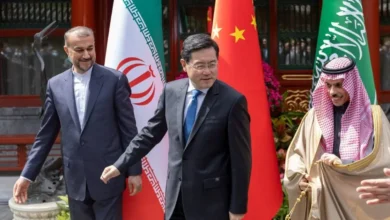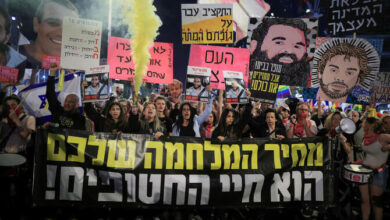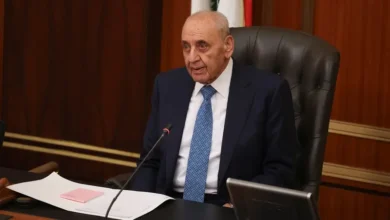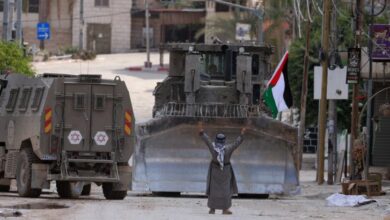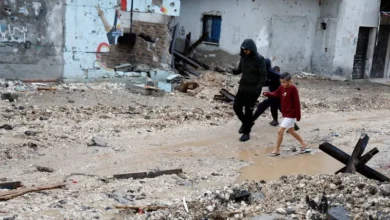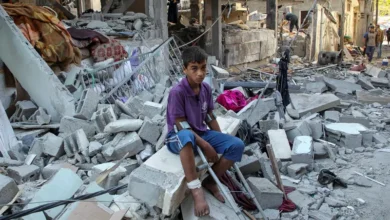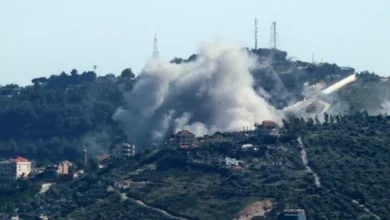An In-Depth Reading of Trump’s Plan

On September 29th, the White House released President Trump’s official plan for peace in the Middle East, entitled “President Trump’s Comprehensive Plan to End the Conflict in Gaza.” It’s impossible to ignore how closely it resembles the core elements of the Palestinian approach, which stipulates that ending the war in Gaza must be part of a broader political settlement! I previously mentioned, in an initial reading, that this plan should be examined with a deep analysis of what lies between the lines, and not just a literal reading of the text. I will attempt here to provide a more in-depth analysis of the elements of this vision.
From a general perspective, this plan can be evaluated on several levels:
First: Structurally, the plan is considered comprehensive and covers military, political, economic, and humanitarian aspects. It attempts to balance the interests of the various parties and proposes a logical sequence from ceasefire to normalization, ultimately leading to the goal represented by Articles Nineteen and Twenty. Their alignment with Palestinian demands, the Saudi vision, and the path to implementing the two-state solution is evident.
Secondly, in terms of its strengths, the plan that concentrated on five main aspects, emphasized immediate humanitarian aid and reconstruction. In terms of flexibility, it offered Hamas members multiple options, ranging from amnesty to departure. On the international level, it added an international dimension by calling on the international community to participate in guarantees and implementation. It also maintained a realistic approach, acknowledging security complexities while attempting to address them through various methods. Finally, the plan covered the aspect of gradual progress, or in other words, it considered the transition by establishing the necessary progression from the current situation to a more stable one that could lead to the implementation of Articles Nineteen and Twenty, as I mentioned earlier.
Thirdly: Regarding weaknesses, many have found that there are dictates imposing conditions on one party without the other, in an unbalanced manner, in addition to a great deal of ambiguity, such that many articles are general and not time-bound (this is what is called constructive ambiguity in political science, which I personally consider a strength, because the plan cannot be seen as a bilateral agreement negotiated directly between two or more parties. Rather, it is the vision of one or more external parties to help the parties directly involved in the conflict overcome the destructive duality. This is why the plan has been careful to offer an opportunity for both parties and their supporters to cooperate, considering that the plan offers some room, however small, for them to improve their positions by taking advantage of this intentional ambiguity. It also gives the drafters of the plan the ability to make detailed modifications by adapting to the commitments of the parties in its articles during its various phases, and by considering potential regional or international external events!). Also, regarding sustainability, it does not guarantee the continuity of the agreement with changes in government. As for the political substance, it postpones the question of a Palestinian state to an uncertain future.
Fourth: Risks. The main risks lie in two important issues: the difficulty of disarmament in a complex environment like Gaza, on the one hand, and the potential failure of the international model in management, on the other.
But it must also be said that this plan presents a real opportunity to break the cycle of conflict towards horizons that could change the current equation, which has persisted for a long time, by immediately stopping the humanitarian suffering, opening prospects for economic development and building confidence that might lead to future targeted negotiations.
Let’s now go into detail about the articles, which I wanted to quote in full, because I believe it’s easy to overlook them when reading the plan…
Articles One and Two paved the way for Article Three and what follows up to Article Seventeen. They first establish the objective: to liberate the Gaza Strip from extremism and terrorism and render it harmless to neighbouring countries, and then to rebuild it in the interest of its inhabitants. The third article explains how to achieve this initial objective, and the following articles, as I mentioned, detail the remaining steps to reach what I consider the most important points: Articles Nineteen and Twenty!
But before that, it must be said that I believe President Trump has concluded that the prolongation of this war is due to a form of collusion between Hamas and Israel, both of which are exploiting the issue of hostages, living or dead, to prolong it. Therefore, depriving them of this tool will undoubtedly deprive them of the pretexts necessary to continue the conflict and, consequently, bring it to an end. I also believe he has concluded that this war is aimed at thwarting any serious attempt at dialogue and the establishment of the desired regional peace, especially after Netanyahu was besieged by the opposition and placed in a precarious position before October 7th, on the verge of collapse. This signals the imminent fall of the right wing, which has been in power for over 20 years, and suggests the possibility of the emergence of political figures willing to establish peace and break the current cycle of violence. On the other hand, Hamas found itself in a position unable to continue governing the Gaza Strip after the increase in protests rejecting its actions and in light of the blocked political horizon before it. Conversely, the Palestinian Authority and the Palestine Liberation Organization, despite attempts at moral and material destruction perpetrated by the Israeli occupation, Hamas, and its regional allies, have made significant progress: the reconstitution of a united front that is steadily moving toward a promising political prospect with the Kingdom of Saudi Arabia, the United States, and other Arab countries before October 7.
Consequently, to achieve the third point, essential for the success of the subsequent steps and requiring both parties to agree to a ceasefire, President Trump had to exert considerable pressure on both sides. On the one hand, the United States discreetly encouraged, or rather turned a blind eye to, the path taken by Saudi Arabia and France regarding the conference on implementing the two-state solution, culminating in the New York Declaration and the growing, now irrevocable, recognition of the State of Palestine. On the other hand, the International Court of Justice and the International Criminal Court continued their crucial work of prosecuting and isolating Israel, transforming it into a pariah state in preparation for its trial. All of this was aimed at exerting pressure parallel to that directly exerted by President Trump on the most influential actors within Hamas, namely Egypt, Turkey, and Qatar. Turkey hosts Hamas’s economic and financial arm, Qatar its political wing, and Egypt is the linchpin of everything concerning the Gaza Strip. And all of this occurred after the neutralization of Iran! This pressure enabled the United States to gain complete control over both sides, thus bringing about a ceasefire. It is surprising that Trump himself announced, on behalf of Netanyahu, during the press conference, the latter’s acceptance of the ceasefire, and that Hamas then announced its acceptance under pressure and threats.
It is interesting to note here that Article Three does not talk about a “ceasefire” but rather about an “end to the war.” This is part of a broader framework not solely focused on stopping the fighting, despite the title chosen for the plan. I noticed in the other articles deal with topics related to daily civilian administration, its training, the economic framework, and its mechanism of operation, most of which, as I see it, stem from Palestinian demands that the Palestinian leadership has always called for, to some extent!
Articles four and five discuss the exchange of prisoners and remains, while the sixth article addresses finding a way out for Hamas by giving it the choice between its commitment and a general amnesty, or a safe departure to host countries.
As for Articles Seven and Eight, in my opinion they express a fundamental Palestinian demand concerning the entry of unlimited aid and its distribution through United Nations agencies, as well as the rehabilitation of infrastructure such as electricity, water, and sanitation, in order to restore a minimum standard of living for the population, and the reopening of the Rafah crossing based on the 2005 agreement—that is, the return of the Palestinian Authority, which was subsequently confirmed.
Article Nine is a pivotal article detailing the role and work of both the Palestinian Committee for Transitional Governance, the Peace Council, and also the Palestinian Authority. It stipulates the work of the Palestinian Committee in managing daily life, public services, and municipal affairs under the supervision of the “Peace Council” until the Palestinian Authority completes its reform program! “So that it can safely and effectively regain control of the sector,” as stated precisely in the text. The role of the Peace Council was limited to general supervision and setting the general framework for “the reconstruction of the Gaza Strip and its financing.”
Articles Ten and Eleven detail the topics of investment and the future economy in general.
Article Twelve focuses on the issue of displacing Palestinians from the Gaza Strip being a thing of the past!
Regarding Articles Thirteen and Fourteen, they gained great importance as they provided important details stating that Hamas has no role whatsoever on one hand, and disarmament and destruction of the tunnel infrastructure, etc., on the other, and that “regional” partners must ensure Hamas and other factions fulfil their commitments!
Article Fifteen addresses the other aspect of the military issue and international intervention, namely the establishment of an “interim” international stabilization force whose tasks are limited to training and supporting Palestinian police forces in Gaza, in consultation with Egypt and Jordan, and which “represents the long-term internal security solution.”
Article Sixteen concerned guarantees against re-occupation or annexation of the Strip! This article was also characterized by necessary flexibility in linking it to standards, stages, and timelines agreed upon between Israel, the International Stability Force, the guarantor parties, and the United States. It also stipulated the complete Israeli withdrawal from the Gaza Strip in its final stage.
Article seventeen addresses the issue of Hamas’s delay in responding to the proposal or its rejection, and stipulates that, regardless of its position, the plan would be implemented. I believe this article cornered Hamas, forcing it to yield to pressure and respond without delay.
As for Article Eighteen, it came to pave the way for the final two articles, stipulating the establishment of an interfaith dialogue and promoting a culture of tolerance, etc., thus contributing to the preparation of public opinion and opening the door to discussions on a peaceful settlement of the conflict.
Finally, Articles Nineteen and Twenty came to explain the nature of the ultimate goal of all that was presented in all the articles, which is to provide the necessary conditions for a credible path leading to “Palestinian self-determination and the establishment of a Palestinian state” according to the official text, which the United States recognized as “a legitimate aspiration for the Palestinian people,” as stated in Article Nineteen. Article Twenty stipulates how to achieve this: “The United States will facilitate a dialogue between Israelis and Palestinians to agree on a political horizon for peaceful coexistence and shared prosperity,” which expresses the very essence of the Saudi vision.
In summary, I believe this plan should not be interpreted as having been designed solely to resolve the conflict in Gaza, contrary to what its title might suggest. If that were the case, a Security Council resolution would have been sufficient to achieve immediate results. Rather, this plan aims, initially, to integrate regional actors into mechanisms that transcend the conflict and its consequences on the ground. Furthermore, it represents an ambitious vision and an attempt to implement the two-state solution, proposing concrete solutions on the ground, with varied modalities in all respects. However, its success remains contingent on the acceptance by the parties concerned of its continued implementation and their willingness to make significant concessions, as well as on the genuine international commitment to its equitable application—a commitment which, in my view, is growing stronger every day.
Therefore, after thirty-five years since the last American proposal in this field, represented by the Madrid Peace Conference, which failed to continue for many reasons, there is no room to mention, it has become necessary not to miss the current historic opportunity and the fierce determination of the international community to realize it, after it has been neglected for so long, and even complicit with Israel in its failure to materialize. We must move forward as quickly as possible. Likewise, Hamas must hasten to implement its part of this agreement, completing the handover of its remaining assets, beginning to surrender its weapons, and completely relinquishing power. It no longer holds any leverage to obstruct or alter the course of events, but only to delay them to some extent under various pretexts. I also believe that it is time for Hamas to prioritize the interests of the Palestinian people over its narrow partisan interests and the interests of its allies in the Muslim Brotherhood and various regional forces, and to try to find an acceptable way to re-engage in political life, far removed from all that it did before, with a purely Palestinian vision, in the hope that its people will forgive it for the risk-taking that almost sank the entire Palestinian cause.
I want to emphasize that the ambiguity and lack of clarity on certain points present a real opportunity for the various parties to improve the situation in a way that serves their interests, but this must be done within the framework of the ultimate vision: the creation of an independent Palestinian state with East Jerusalem as its capital, which, I have no doubt, will inevitably happen, God willing.
Finally, this article expresses my personal viewpoint and my own perspective, and I do not claim to possess the absolute truth regarding the intentions of all parties or the authors of the plan. My aim is rather to encourage readers to reconsider the plan’s content and understand it from a broader perspective, in order to grasp its dimensions that extend beyond the Gaza Strip, and to consider it within a more comprehensive regional, even international, context.
Abdal Karim Ewaida
Palestinian Ambassador to Côte d’Ivoire

